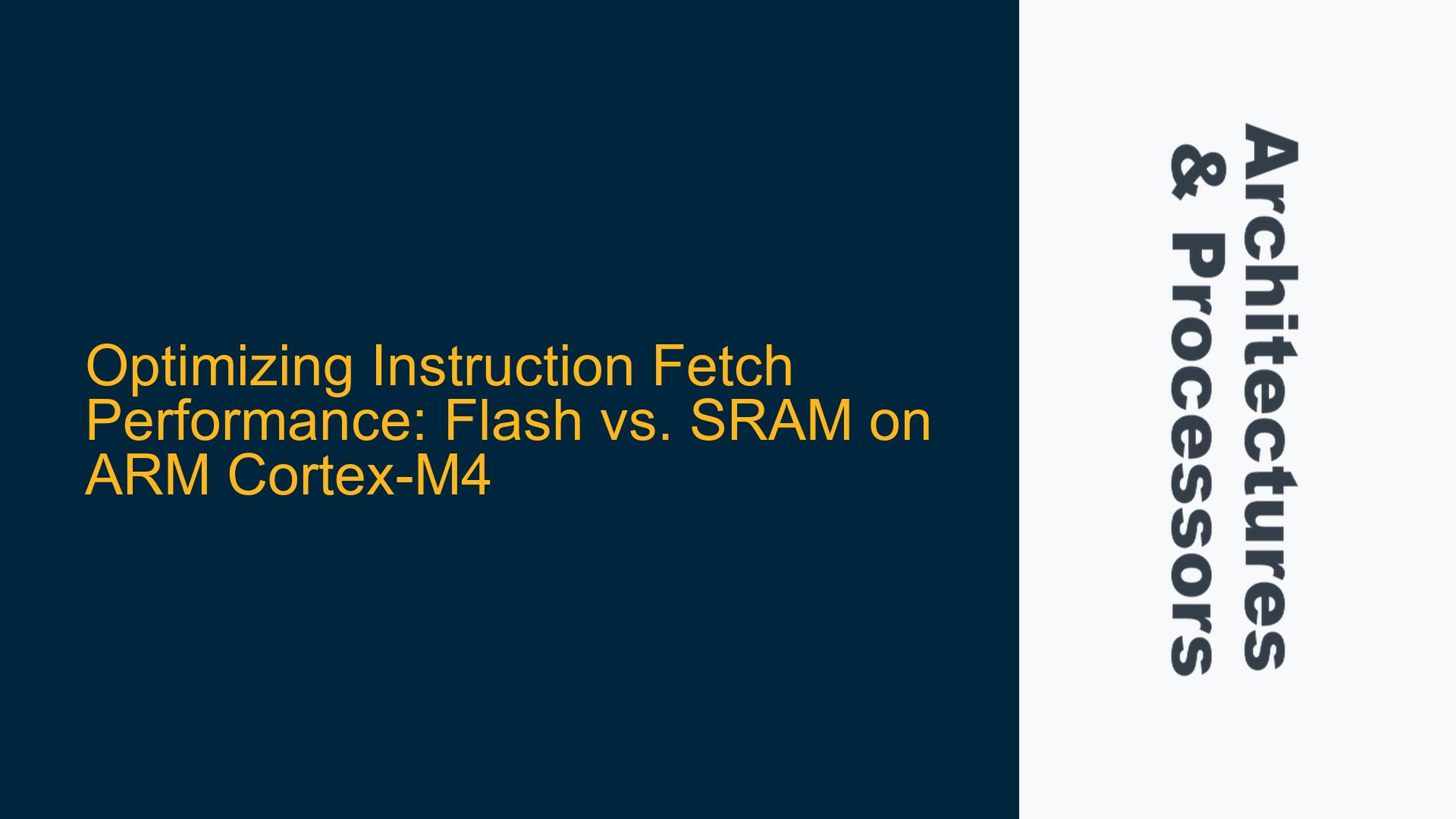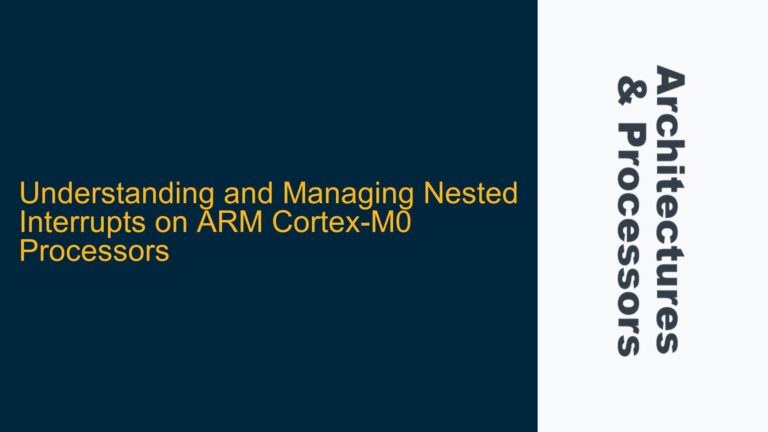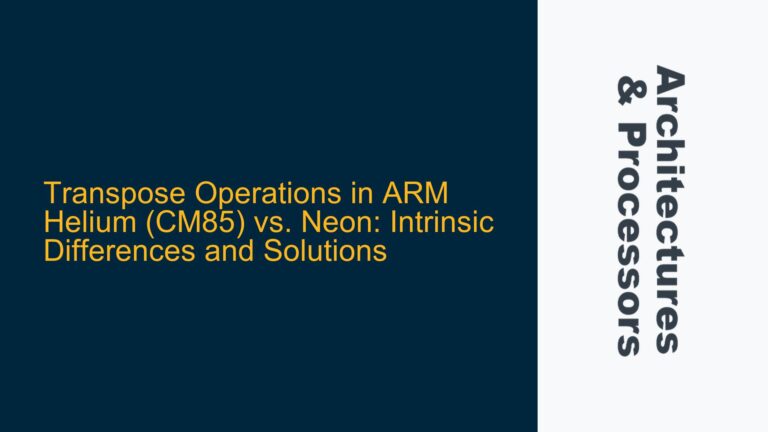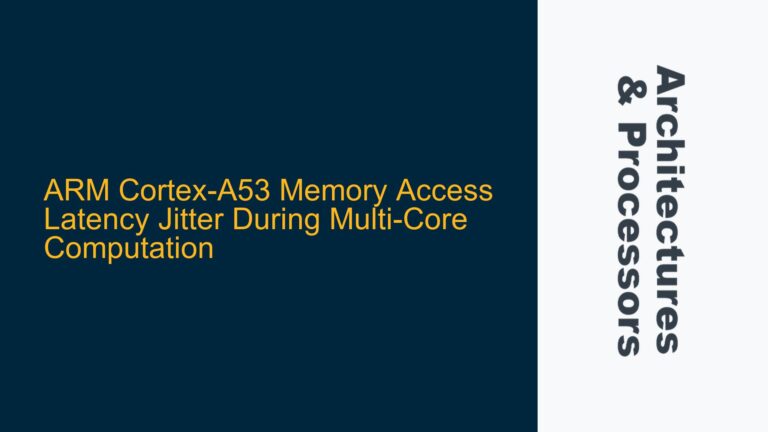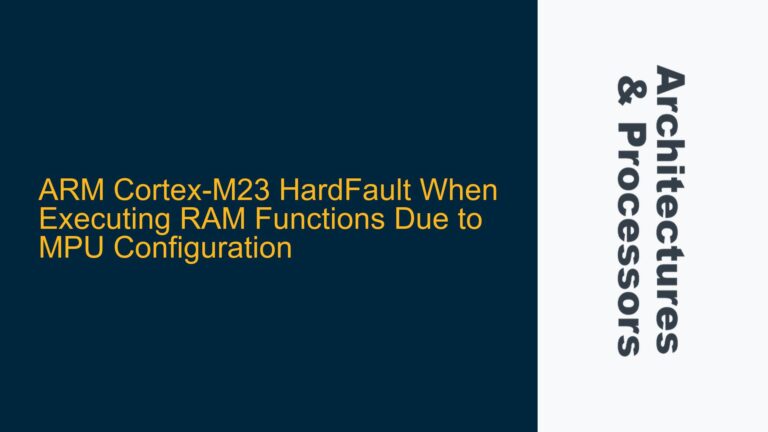ARM Cortex-M4 Instruction Fetch Parallelism and Memory Performance
When designing embedded systems using ARM Cortex-M4 processors, one of the critical decisions developers face is whether to execute code directly from Flash memory or to copy the firmware to SRAM for execution. This decision has significant implications for system performance, particularly in terms of instruction fetch latency, memory bandwidth utilization, and parallelism between instruction fetches and data accesses. The ARM Cortex-M4 architecture, with its Harvard bus architecture, provides separate buses for instruction fetches (I-code bus) and data accesses (D-code and system buses). However, when executing code from SRAM, the system bus is used for both instruction fetches and data accesses, which introduces potential contention and performance trade-offs.
The primary question revolves around whether fetching instructions from SRAM can be carried out in parallel with data accesses, and whether this setup outperforms fetching instructions from Flash memory. While SRAM is inherently faster than Flash in terms of access latency, the presence of specialized accelerators like ST’s Adaptive Real-Time Memory Accelerator (ART Accelerator) in some microcontrollers complicates the comparison. Additionally, the Cortex-M4’s bus architecture and memory interface play a significant role in determining the overall performance.
To understand the performance implications, we must consider the following factors:
- The latency and throughput of Flash memory versus SRAM.
- The impact of bus contention when using the system bus for both instruction fetches and data accesses.
- The role of memory accelerators and prefetch mechanisms in mitigating Flash access latency.
- The parallelism capabilities of the Cortex-M4 architecture when fetching instructions and accessing data simultaneously.
This analysis will focus on a generic ARM Cortex-M4 implementation without vendor-specific optimizations, providing a baseline understanding of the performance trade-offs between Flash and SRAM for instruction fetches.
Flash Access Latency and SRAM Contention: Key Performance Factors
The performance difference between fetching instructions from Flash and SRAM stems from two primary factors: the inherent latency of Flash memory and the potential for bus contention when using SRAM. Flash memory, while non-volatile and cost-effective, has significantly higher read latency compared to SRAM. This latency is due to the physical characteristics of Flash cells, which require longer access times for data retrieval. To mitigate this, many microcontrollers implement memory accelerators or prefetch buffers that cache instructions from Flash, reducing the effective latency.
On the other hand, SRAM offers much lower access latency, making it an attractive option for high-performance applications. However, when executing code from SRAM, the Cortex-M4 must use the system bus for instruction fetches, as the I-code bus is dedicated to Flash memory. This introduces the possibility of contention between instruction fetches and data accesses, as both operations share the same bus. The extent of this contention depends on the memory access patterns of the application and the efficiency of the bus arbitration mechanism.
Another critical factor is the parallelism between instruction fetches and data accesses. When executing from Flash, the Cortex-M4 can leverage its Harvard architecture to fetch instructions and access data simultaneously, as these operations use separate buses. However, when executing from SRAM, both operations compete for the system bus, potentially reducing parallelism and overall throughput.
To summarize, the key performance factors are:
- Flash memory latency and the effectiveness of memory accelerators.
- SRAM access latency and the potential for bus contention on the system bus.
- The parallelism capabilities of the Cortex-M4 architecture when fetching instructions and accessing data.
Understanding these factors is essential for making informed decisions about memory configuration and optimizing system performance.
Strategies for Optimizing Instruction Fetch Performance on Cortex-M4
To optimize instruction fetch performance on the ARM Cortex-M4, developers must carefully balance the trade-offs between Flash and SRAM execution. The following strategies can help achieve the best possible performance:
-
Evaluate Flash Memory Accelerators: If the microcontroller includes a memory accelerator like ST’s ART Accelerator, assess its impact on Flash access latency. These accelerators can significantly reduce the effective latency of Flash memory, making it competitive with SRAM for many applications. Measure the performance of critical code sections with and without the accelerator enabled to determine its effectiveness.
-
Analyze Bus Contention in SRAM Execution: When considering execution from SRAM, analyze the memory access patterns of the application to identify potential bus contention. Use profiling tools to measure the impact of contention on performance and identify bottlenecks. If contention is significant, consider optimizing the code to reduce simultaneous instruction fetches and data accesses.
-
Leverage Harvard Architecture for Parallelism: When executing from Flash, take full advantage of the Cortex-M4’s Harvard architecture by structuring the code to maximize parallelism between instruction fetches and data accesses. This may involve reorganizing data structures or optimizing algorithms to minimize dependencies between instructions and data.
-
Hybrid Execution Models: In some cases, a hybrid approach may be optimal, where critical code sections are copied to SRAM for execution while less performance-sensitive code remains in Flash. This approach leverages the low latency of SRAM for critical paths while conserving SRAM space for data storage.
-
Benchmark and Profile: Ultimately, the best way to determine the optimal memory configuration is through benchmarking and profiling. Measure the performance of the application under different configurations and use the results to guide decision-making. Pay particular attention to real-time constraints and worst-case execution times.
By carefully considering these strategies and understanding the underlying performance factors, developers can make informed decisions about memory configuration and optimize instruction fetch performance on the ARM Cortex-M4. The choice between Flash and SRAM execution depends on the specific requirements of the application, and a thorough analysis is essential for achieving the best possible performance.
